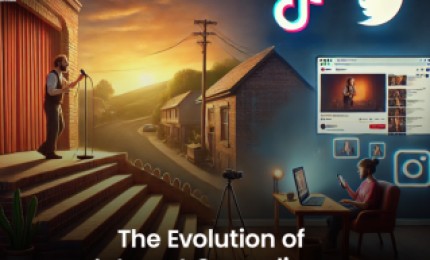The art of acting is inseparable from the visual language of cinema. As an actor, your performance extends beyond dialogue and emotion—it's also about how you interact with the camera. Delving into various camera shots can elevate your on-screen presence and enhance collaboration with directors and cinematographers. This comprehensive guide delves into the essence of 9 essential camera shots that every actor should master.
Camera shots wield directorial control over framing and audience perception. Familiarity with different shots empowers actors to tailor their performances, effectively conveying characters' emotions and intentions.
The close-up shot brings the actor's face into focus, capturing intricate expressions and emotions. It's an opportunity to convey intimacy, vulnerability, and subtle nuances that deeply engage the audience. From tear-filled eyes to fleeting smiles, the close-up captures the essence of a character's inner world.
Medium shots frame actors from the waist up, providing context to scenes while maintaining a personal connection to emotions. These shots balance the portrayal of characters' emotional states with their interactions in the environment, ensuring a holistic view.
Long shots establish actors within their surroundings, showcasing both their physical presence and the mood of the setting. These shots emphasize characters' relationships to their environments, evoking feelings of isolation, connection, or insignificance in vast landscapes.
Wide shots, often referred to as establishing shots, provide a sweeping view of the scene's setting. By introducing locations and illustrating relationships between characters and their environment, these shots lay the foundation for forthcoming interactions.
Over-the-shoulder shots place the camera behind one character, capturing the perspective of another. These shots invigorate dialogue exchanges and spotlight reactions, enriching interactions with a sense of authenticity and immediacy.
Tracking shots involve camera movement, following actors' motions. By infusing scenes with dynamic energy and continuity, tracking shots mirror the flow of real life and provide a seamless transition as characters move within the frame.
Low-angle shots capture actors from below, emphasizing their presence and conveying authority or dominance. With their dramatic flair, these shots infuse pivotal moments with intensity and depth, reinforcing character dynamics.
High-angle shots offer a bird's-eye view of actors, evoking vulnerability, weakness, or insignificance. These shots amplify the emotional complexity of a scene, underscoring power dynamics, tension, and emotional states.
Cooperation between actors and cinematographers is pivotal. Understanding the camera's role in storytelling is key. Engage in dialogues about shots that serve the scene's emotional beats, fostering a harmonious relationship that enhances the narrative's impact.
Mastery of camera shots is a hallmark of actors who excel in visual storytelling. Each shot carries a purpose, influencing how characters and narratives are perceived. By grasping the significance of close-ups, medium shots, long shots, wide shots, over-the-shoulder shots, tracking shots, low-angle shots, and high-angle shots, actors enrich their performances and contribute to the cinematic journey.
Remember, acting and camera work are intertwined dances of expression. As you delve into the intricacies of camera shots, you'll evolve as a performer, effectively weaving characters into the fabric of cinematic stories and captivating audiences with your mastery.

15 Ways to Make Money as a Singer: A Complete Guide to Monetizing Your VoiceEarning money as a singer requires more than just talent, it demands creativity, persistence, and a willingness to explore...
Read Blog
When Kunal Kamra's Humor Got Him Into Trouble: A Deep Dive into the Controversies of India's Most Fearless ComedianKunal Kamra Controversy: Laughter, Lawsuits, and the Limits of Free SpeechStand-up...
Read Blog
The Oscar race is always full of drama, but this year? It’s absolute chaos. From shocking controversies to unexpected winners, the battle for Best Picture at the 2024 Academy Awards has taken...
Read Blog
In the ever-changing landscape of entertainment, few transformations have been as dramatic and swift as the rise of internet comedians. What began as a platform for amateur funny videos has evolved...
Read Blog
Introduction: In the competitive world of entertainment and talent, having the right representation can make all the difference in launching and sustaining a successful career. Whether you're...
Read Blog.jpg)
While the world of modelling often dazzles with glitz and glam, it's also critical we discuss its darker shades, pulling the curtain back on some challenging realities. Today, let's embark on...
Read Blog